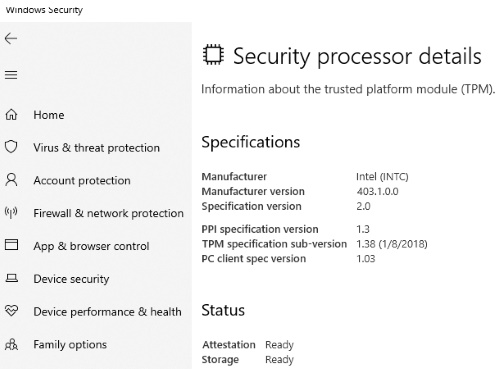RSA is a public-key encryption system designed by Ron Rivest, Adi Shamir and Leonard Adleman. It uses a set of keys, EK (Endorsement Key), SRK (Storage Root Key) and AIK (Attestation Identity Key), that protect a device against unauthorized firmware and software modifications. A TPM (Trusted Platform Module) is a chip on a computer board that securely stores the RSA encryption keys.
One of the requirements for Windows 11 is TPM version 2.0. If you have Windows 10 (the only version of that can be upgraded to Windows 11), and you have TPM version 2.0 module, and it's enabled, then (if all other system requirements are met) you can install and run Windows 11. Here is how to determine if you have TPM version 2.0:
In the Start menu, select Settings (the gear icon). In Windows Settings, scroll down to and click on Update & Security. In the Update & Security window, click on the Windows Security shield icon. In the Protection areas list that appears, select Device Security.

Under Device Security, Security Processor should be listed. If Security Processor is listed, select it to verify the specification version and if it is activated.
More Windows Administration Information:
• Cortana, Assistant or Spy?
• Windows Server 2019 and PowerShell All-in-One For Dummies
• Disable Annoying 'Get Windows 10' Message
• CompTIA A+ Complete Study Guide
• How to Audit Security Permissions and Access Rights in Active Directory
• Network Security Through the Principle of Least Privilege
• Computer Technician's Guide to Electronics Disposal and Recycling
• How to Setup DHCP (Dynamic Host Configuration Protocol) on a Windows Server
• How to Reset Windows 7 Password
• Application, Program, Process, Service, Thread; What Does it All Mean?

